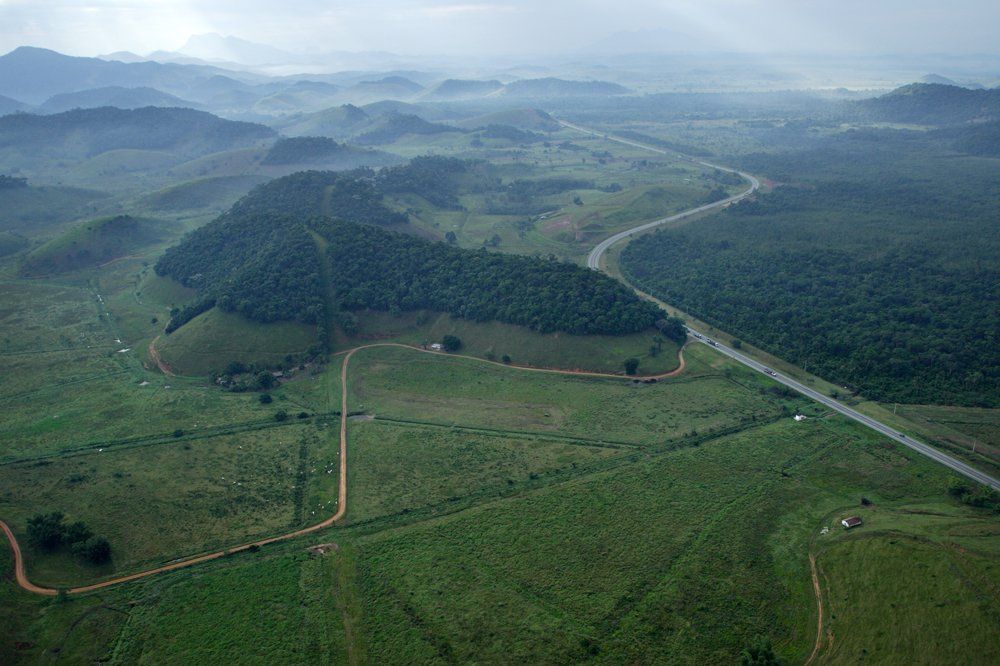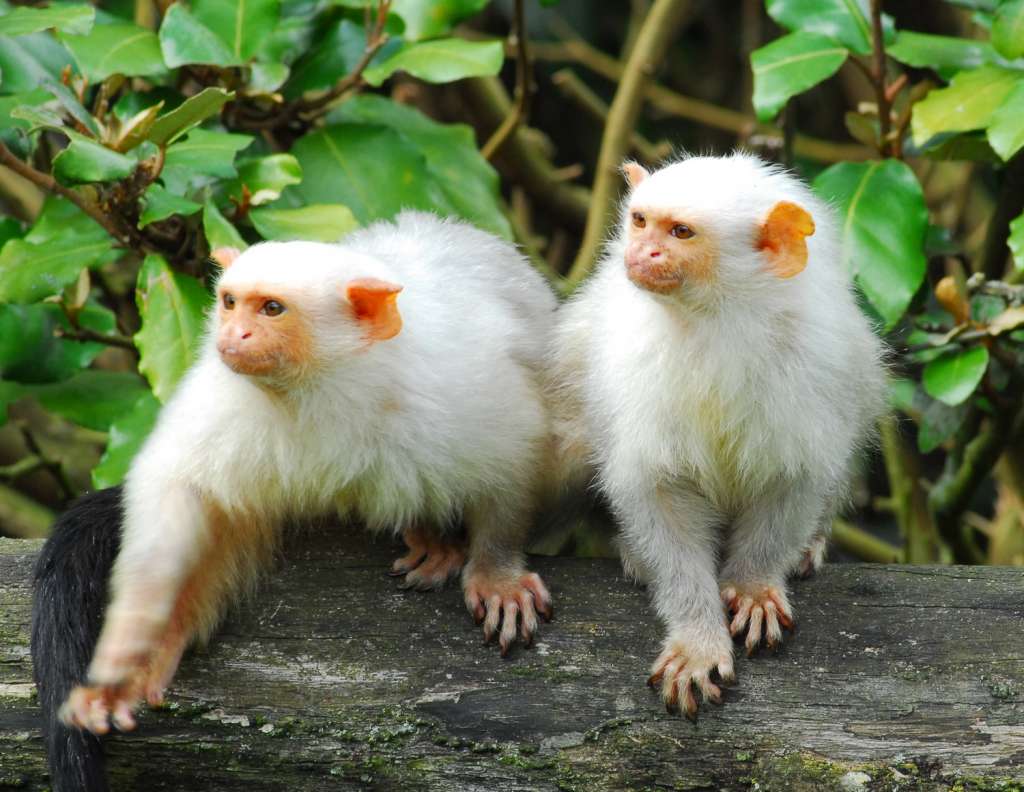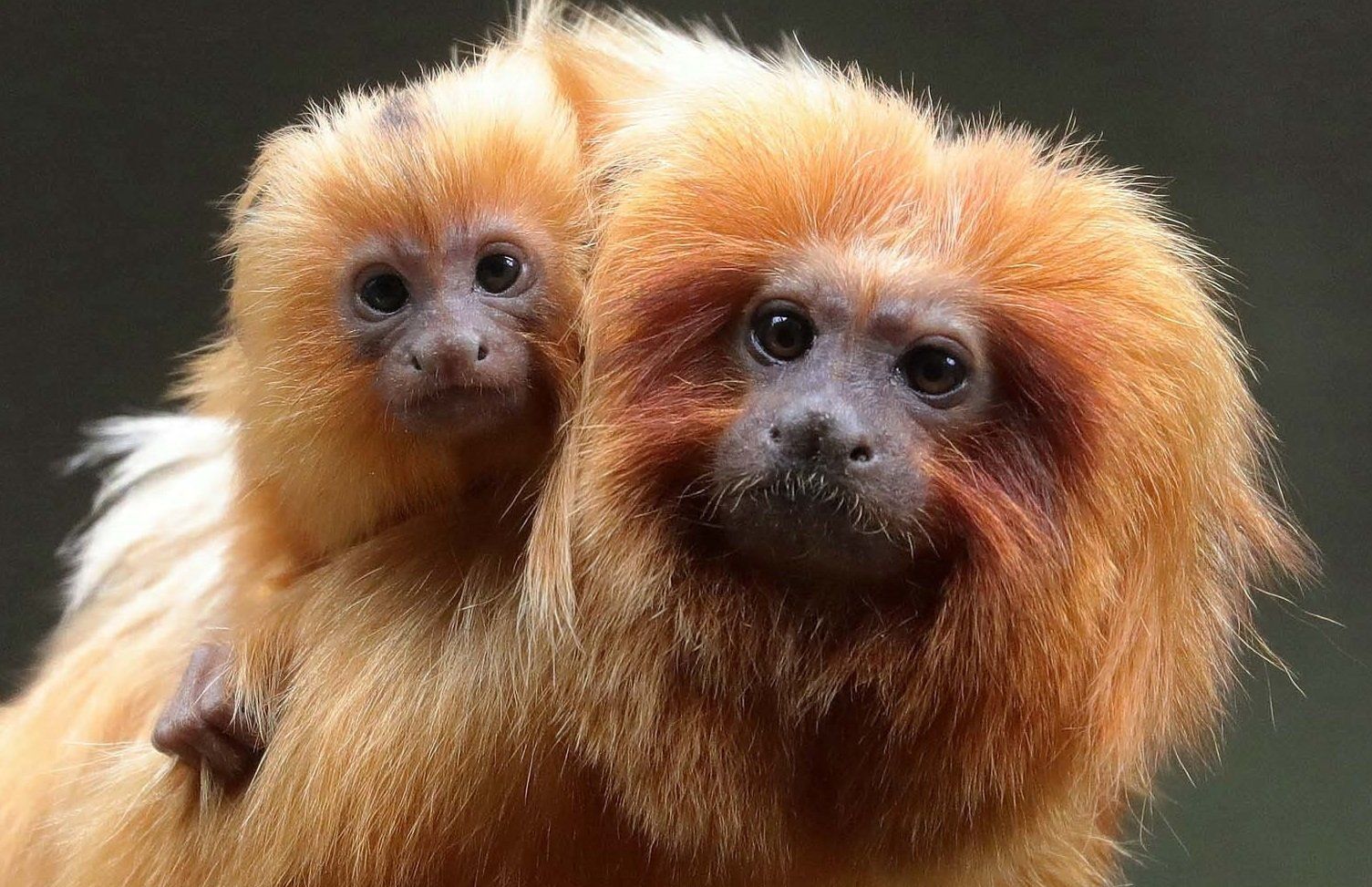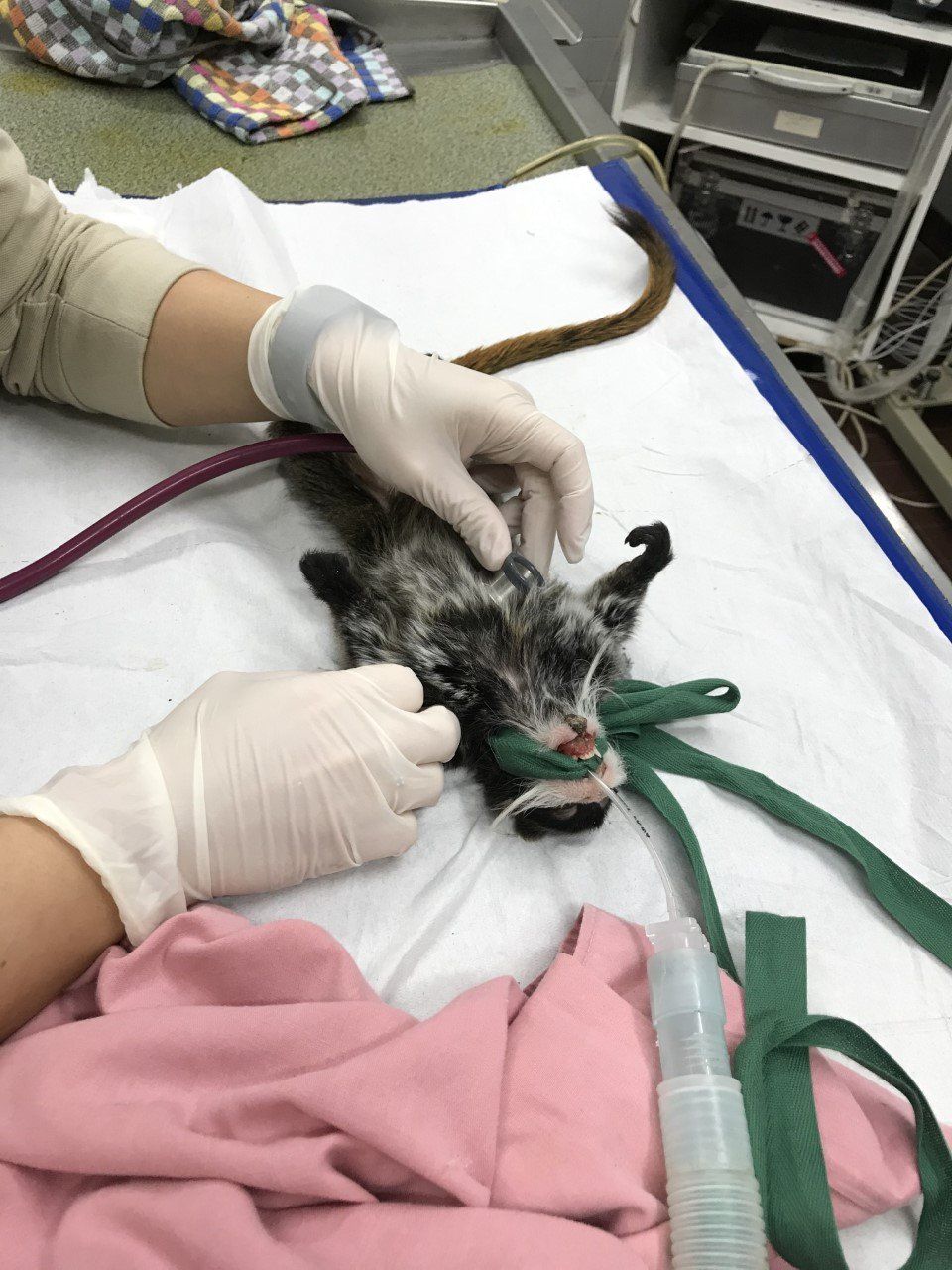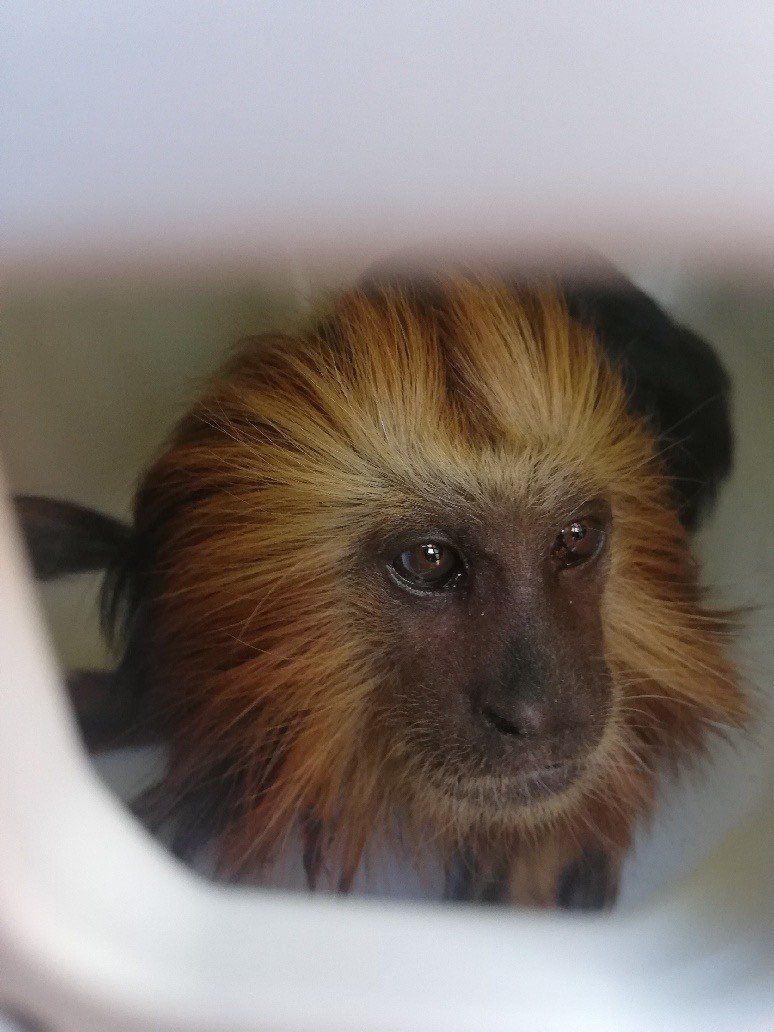Tamarinds
Small endemic and endangered monkeys.
Photos : E. Baril, S. Goutenègre, Graig Chaddock, BioBrasil
Generality
Statutes and retention
Some species of tamarins and oustiti:
Improbable looks!
Callitrichidae are quite incredible primates both in terms of their looks and their temperaments. It is partly for these reasons that they are victims of poaching... Each species is quite easily identifiable thanks to a fairly showy (or on the contrary very discreet) and atypical coat around the neck or head. The pinched tamarin for example has an exuberant white Iroquois crest, the golden lion tamarin a red lion's mane, the emperor tamarin large whiskers or other species may have no hair at all on the head. The Goeldi tamarin has a very discreet black coat which compensates for its strong mini-gorilla character! However, these distinctive signs specific to each species do not make it possible to differentiate the male from the female, the two sexes are identical. Most species also have ears with rather particular shapes of auditory pavilions. Some have pointed Mr Spok ears like the labiate tamarin, or wide ears like the golden lion. We will not be able to list the 61 species here...
Social organization
The Callitrichidae family includes all gregarious primates, living in family groups of 5 to 18 individuals depending on the species. Most groups consist of a pair with its young and sometimes other related individuals.
Communication plays a major role in the survival of these groups: Olfactory communication with the marking of territories and oral communication with large vocal repertoires. It has been proven that a good number of species (emperor tamarin, Goeldi's tamarin) are able to coexist in the same territory in order to "help each other". Some being able to understand the communication of others, such as an exchange of good practices, in particular for food resources and being alarmed at the approaches of predators.
Photos: S. Goutenègre, E. Baril, I. Inforzato, M. Grévin.
Behaviours
Tamarins are diurnal animals, starting their activities at dawn, surveying their territory to find food. Their cries allow them to stay in touch at the slightest alert. Grooming (delousing) between individuals is a very important social activity that serves to strengthen bonds. Among young people, games are also important, embarking on chases between brothers and sisters. The ties that unite the members of a family are very strong. The dominant couple keeps an eye on the whole group, the male having a heavy load because he is very involved in raising the young.
At nightfall, everyone finds themselves in the cavity of a tree to sleep there together.
Photos: S. Goutenègre, E. Baril, G. Shaddock, M. Grévin.
Feed
The tamarind family has a very varied diet. In order to survive in their environment, these primates rely on their numbers to find food sources! They stay in constant contact thanks to their different vocalizations. They are omnivorous, which mainly includes various fruits, insects (worms, grasshoppers), gum arabic which they extract from trees by tearing off the bark with their teeth. They hunt small prey (frogs, birds, etc.) and consume various plants, flowers and nectars.
Reproduction: a particularity, twins!
A peculiarity characterizes the Callitrichidae family well in their reproductions: the birth of twins, and sometimes even triplets (with the exception of Goeldi's tamarins which have a single young).
Arriving at sexual maturity around 15 months, the female marks her territory with glands to inform the male of her availability and in particular to impose her dominance over other females. A whole ballet of tastes and attentions from the male will follow. Matings are often very discreet. The female gives birth after a gestation of about 130 days. The litter often consists of (fra)twins, or even triplets. Only the dominant couple reproduces in the group, the female being able to stop the ovulation of the other females. The whole group participates in raising the young, but the bulk of the work falls to the father who, after a few weeks, takes charge of raising the litter. The father will carry the youngsters on his back until their 4th month, before they begin to be completely independent. It is in particular he who will teach them to select their foods. The young are weaned at around 3 months of age. This period is very intense for the group, especially in terms of communication and social ties. The newborns will go play and learn with the other members of the group, giving their father a little respite. Very young males from previous litters will start "training" to be fathers. It is absolutely fascinating to observe these behaviors within the group and to see that the young males instinctively take on the role of father. Females are often much more independent compared to newborns.
This mode of reproduction allows the species a better survival rate.
Photos: S. Goutenègre, except silver marmoset, Vallée des singes.
An exemplary father!
In lion tamarins, as with most tamarin species, the father plays a crucial role in rearing the young. The female is limited to brief care of newborns for breastfeeding. He constantly carries the little ones and always keeps a very protective eye when they stray a little too far. Mr is all the more in demand when he has several litters, because it is mainly him who puts order in the family group. He is also very attentive with his female by frequent delousing. The female, meanwhile, is responsible for letting competitors from other groups know that the place is taken! She emits hoarse and repetitive vocalizations to make other females keep their distance. She is still present for social interactions but can remain quite distant from the little ones. In the evening, everyone meets to sleep together in the same tree cavity. Suffice to say that dad needs a good night's sleep to recharge the batteries!!!
Health monitoring and care:
Tamarins are generally quite robust primates, but like any animal, subject to some medical specificities.
You should know that these animals are allergic to gluten and subject to digestive complications. Indeed, they can very badly tolerate certain foods such as those too rich in vitamin C or iron, which are harmful to the proper functioning of the digestive organs.
Food, logically, remains the essential basis for the proper functioning of their organism. In their environment, they consume a wide variety of foliage and other flowers that meet their need for fiber. Insects and eggs provide them with their protein needs.
Stress, like parasitic contamination, can cause a disruption of the digestive system, with diarrhea. We must not hide the psychological side in these sensitive beings. These gregarious animals do not tolerate being isolated from their group very well, which can cause behavioral problems, such as self-mutilation, aggressiveness, lethargy, or even the absence of vocalization.
Opposite, some shots of medical examinations carried out on an emperor tamarin and a Goeldi tamarin by Dr Pierre Huberdeau, veterinarian specializing in wildlife and member of the association, and the veterinary team of the Menagerie du jardin des Plantes .
Photos: S. Goutenègre/ MNHN
The threats...
the crucial issue of forests.
The major threat to the future of these species is the destruction of their habitat. Our ability to become aware of these ecological issues and the responsiveness of the States concerned by the management of these territories is a priority. Agro-forestry cultivation, such as the plantation of cocoa, makes it possible to finance and involve the local populations and to raise their awareness of the protection and replanting of these primary forests. One species, the golden lion tamarin, emblem of this ongoing rescue, has come close to extinction... for how long?
La Matà Atlanticà: all a symbol...
En Amérique du Sud, un pays à lui tout seul résume l'étendu de la catastrophe écologique majeure qui perdure depuis les années 80 : le Brésil. Ce pays qui exploite sa richesse, son poumon vert, avec la destruction massive de ses forêts dans le bassin amazonien. Nous avons tous en mémoire, les images effroyables de milliers d'hectares en feu à l’Été 2019. Tout un biotope voué à disparaître avec des espèces animales et végétales endémiques. Les tamarins en font partie.
Il y a un exemple concret qui résume la situation, c'est la forêt Matà Atlanticà, au sud Est du Brésil dans l'état de Rio de Janeiro. Une des rares forêts côtières primaires, unique habitat de 4 espèces de tamarins lion. Sa superficie dont il ne reste plus que de 2% de sa superficie d'origine du fait de l'exploitation pour le bois, le charbon de bois, l'agriculture, l'élevage de bétail suivie de l'expansion urbaine. Aujourd'hui, la distribution des tamarins lion s'est restreinte sur le bassin de la rivière Sao Jao, soit pas plus de 3000 Km2.
Même à l'état réduit, la Matà Atlanticà, est d'une importance économique, sociale et environnementale. En raison de son isolement géographique par rapport aux autres types de forêts, 52% des espèces d'arbres, 92% des amphibiens et au moins 158 espèces d'oiseaux ne se trouvent nulle part ailleurs. 18 des 77 espèces de primates du Brésil, comprenant les tamarins, se trouvent uniquement dans cette forêt. On y trouve également des jaguars, tapirs, coatis et nombre de reptiles et poissons endémiques. La diversité des arbres de cette forêt se classe parmi la plus élevée du monde. Cette forêt fut classée au patrimoine mondial de l'UNESCO en 1999.
Aujourd'hui, afin de préserver les populations de tamarins d'un appauvrissement génétique de part la fragmentation de leur habitat, nous aidons l'association AMLD à financer la construction de "pont" forestier, des couloirs verts, pour permettre un brassage des populations de tamarins. Les populations locales sont activement impliquées pour la reforestation et dans une pratique d'agro-culture raisonnée, notamment avec les plantations de cacao qui ne nécessitent pas une déforestation totale. Ce qui peut permettre à terme, la survie de certaines espèces comme le tamarin lion à tête doré qui pourrait s'adapter à ces changements.
Photos: S. Goutenègre, E. Baril, I. Inforzato/ carte: SGLT
Poaching...
a current scourge.
In addition to habitat loss, tamarin populations, particularly lions, have for many years been trafficked internationally for the black market of pets or private collectors. This is not new, Madame de Pompadour had one... For a decade, there has also been an increase in thefts and poaching in France, within zoos... The association systematically offers its expertise to the Justice .
Coveted species...
Due to their small size and familiarity, tamarins have been trafficked for the pet market for decades. These gregarious animals with complex needs and social ties are obviously not made to be kept as such... Alone, they waste away, can become dangerous (it's a monkey, it bites!) and a vector of zoonoses. Without appropriate care and conditions of detention, they cannot survive. Despite this, nowadays there is a real international market for unscrupulous private collectors. This being completely illegal, these species being protected by the Washington Convention.
In captivity, the golden and golden-headed lions kept in zoos are all the property of Brazil and are the subject of conservation and breeding programs, supervised by professional animal teams. However, in recent years we have seen an upsurge in thefts and poaching of several animals in zoos: In 2013, theft of several marmosets from a zoo in the Canary Islands, in 2014 theft of 5 tamarins from Blackpool Zoo in the United Kingdom. France is in turn affected by this scourge: in 2011, 2 emperor tamarins were stolen from the Lyon Zoo. The Beauval zoo was also a victim in 2015, with the theft of 7 golden lion tamarins and 10 silver marmosets, without being able to find their proteges, nor the perpetrators of the theft, despite legal action. Same observation, at the end of 2020, to the Cavex association which had 14 golden-headed lion tamarins stolen. Recently, in August 2021, the Upie Zoo had a pair of labiate tamarins and 10 ring-tailed lemurs stolen by a commando, a case followed by the Valence Public Prosecutor's Office. Thanks to the investigative work of the gendarmerie, 8 lemurs were found a week later and returned to the zoo. At the beginning of 2022, 4 marmosets were stolen from the Thoiry zoo before being found a few days later... The list goes on.
We systematically approach justice to offer our expertise. This lucrative traffic would benefit private collectors who "order" or sold as pets on the black market. An animal can be resold for between 5,000 and 10,000 Euros, or even more. In France, the law punishes with 7 years' imprisonment and a fine of 15,000 to 150,000 Euros for trafficking in animal or plant species in an organized gang.
These wild animals, which require special needs, have absolutely no place as pets. Given their conservation status in the wild, poaching is extremely damaging to these species.
Photos: S. Goutenègre, G. Shaddock, E. Baril.
The incredible rescue of Hugo...
Here is the story of a golden-headed lion tamarin who lived quite an epic across France... The golden-headed lion tamarin is one of the most endangered and unfortunately coveted species of Callitrichidae on the black market. This primate, named Hugo, was originally part of a conservatory breeding based in the Paris region. At the end of 2020, this farm was the subject of an intrusion and was the victim of the theft of 14 tamarins, a case followed up by the local gendarmerie brigade. As soon as the theft was announced, the association followed the progress of the research very closely and offered its expertise on this case to the Pontoise prosecutor in charge of the case. Very quickly videos appear on social networks where we can see frightened tamarins in a bathroom, prostrate under a shower. We have wind of a sale proposal in the cellars of housing estates in the 19th arrondissement of Paris. Then the primates vanish. Traces of these animals are found in Angers without being able to get their hands on them, and nothing more... Until September 01, 2021, where in the middle of a school playground in the northern districts of Marseille is seen a small primate running towards a flea market. The intervention of the Marseille firefighters and their NAC team is necessary and manages to capture the tamarin which is relatively calm. The firefighters having contacted us, we were able to give them the first recommendations, in particular for his diet and to make sure of his health after nearly a year of research... he is a little dehydrated but in good shape. The Marseille prosecutor takes up the case and Hugo will be placed temporarily at the Marseille SPA in order to find his owner. Luckily he is chipped. The decision will be made to place him in a zoo in the South of France. A story of theft that ends well, thanks to a chain of solidarity and a clever little monkey who has obviously escaped his captors! The 13 other companions of Hugo unfortunately remain untraceable to this day...
SAVE THE DATE! Let's celebrate tamarinds together!
August 2, International Day of
golden lion tamarin
Les tamarins lion doré et leurs jumeaux vous accueillent avec leurs facéties!
Menacés par la perte de leur habitat, ils sont également victimes du braconnage.
Rejoignez nous sur notre page Facebook et rendez leur visite à la Ménagerie du jardin des plantes à Paris, pour découvrir ces fascinants primates du Brésil!
Dans la jungle, le lion n'est pas mort!
Aidons le a reconquérir son territoire!
15 Août,
Journée internationale du
tamarin pinché!
With its recognizable look among all, this tamarin native to Colombia is one of the most endangered species. Victim of deforestation and poaching, he is frequently seized by the authorities for the black market of pets. Let's celebrate this little punk!
Together let's protect the pinched tamarind!



















